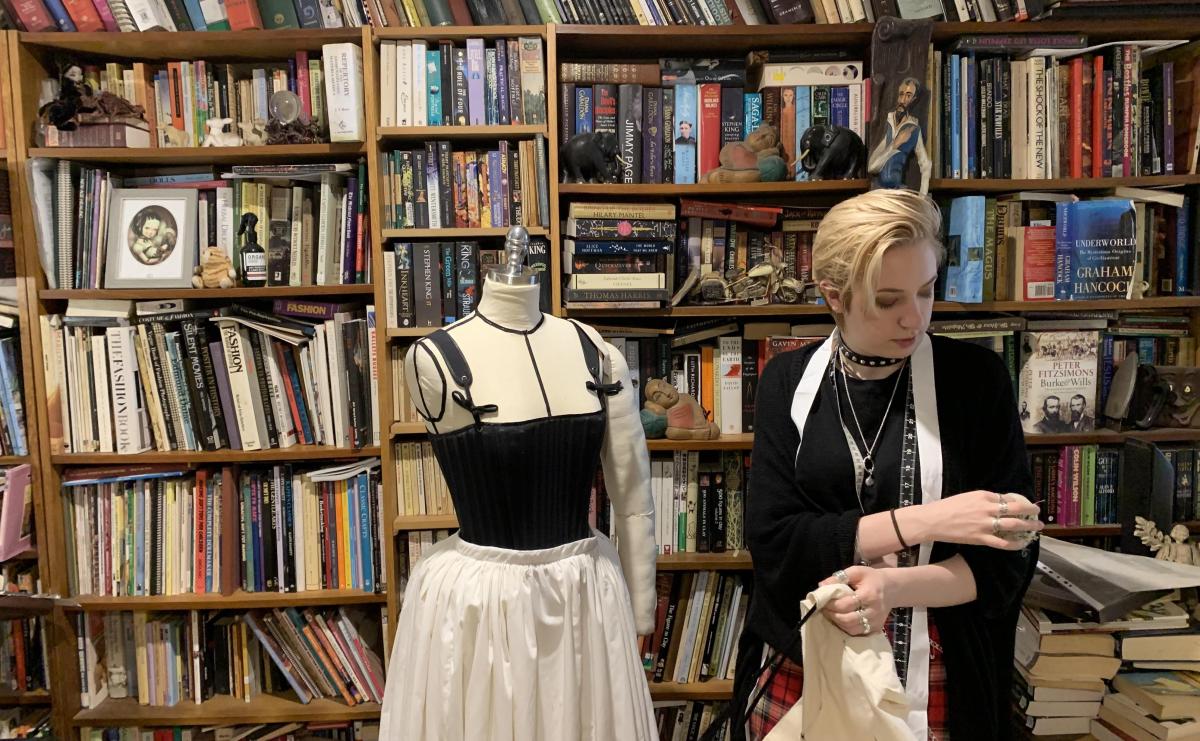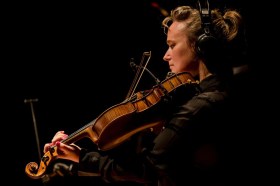When it comes to stage and screen, costume makers are the magic weavers. The costumes that adorn actors tell the story before the story even begins, allowing the audience to be transported to a different world or another era.
From the delicate period costuming in The Favourite and Little Women to the futuristic stylings of Mad Max: Fury Road – costumes evoke the imagined and real world.
The passion for screen and stage is evident in the students of the National Institute of Dramatic Art’s (NIDA) Bachelor of Fine Arts Costume.
These NIDA students are currently busy in their home studios creating Tudor-inspired clothing, working on their courses regardless of lockdown. This new digital delivery model mixes practical work with online learning.
From a very young age, first-year student Lily Mateljan always knew she wanted to make costumes. ‘I love everything from historical to modern [clothing],’ she told ArtsHub. ‘I’ve always loved the dark fantasy/gothic horror of works like Tim Burton and shows like American Horror Story.’
With a rich history of tailors and dressmakers in her family, Mateljan was inspired to study at NIDA. ‘From the age of four I was sewing and starting to make my own clothes. I was taught by both my parents who were always making and sewing their own things.’
CREATING GARMENTS INSPIRED BY HISTORY
NIDA’s Head of Costume Annette Ribbons is passionate about her students, encouraging them to take time to hone their techniques. She told ArtsHub: ‘Two of the core skills that the first year students are learning – Draping and Flat Patternmaking – are both methods of creating toiles, and ultimately costumes.’
Ribbons explained the meticulous art of toile making derives from the French word for linen cloth. Toiles are often used only to describe a garment and made to test a pattern before it is made into a costume.
Mateljan explained her process: ‘This is the first toile of a Tudor bodice that I have made from scratch. I started by making the flat pattern, and then moved to the toile, then fitted it to a mannequin that I have here at home.’
NIDA has worked closely with its students to ensure a smooth transition to online learning, said Ribbons: ‘For these classes we continued where we left off from the face-to-face teaching at the start of the year.
‘For the Draping classes that I run, we have increased the amount of information uploaded so that they can be prepared for each session with the materials we have provided, and [along with] the appropriate tools for the session.’
Ribbons described how NIDA is embracing technology to communicate with students. ‘We have a live Zoom session which includes a demonstration, then they are given time to undertake the task followed by a catch-up later.’ She said these sessions are also recorded in case students need to review or refer back to the session.
‘One of the challenges was that our students live all over Australia, as NIDA is a national education institution, and many of them had to move back home.’ NIDA ensured students were equipped with the tools needed to start learning from their home studios. ‘In a way, though, having our students scattered across Australia doesn’t make a difference as everyone is online,’ Ribbons said.
With teachers supporting students closely, perceived challenges can be seen in a new light. ‘Definitely the most challenging thing is also the most valuable learning experience,’ mused Mateljan. ‘[And it’s] learning to trust yourself and what the teachers have taught you.’






